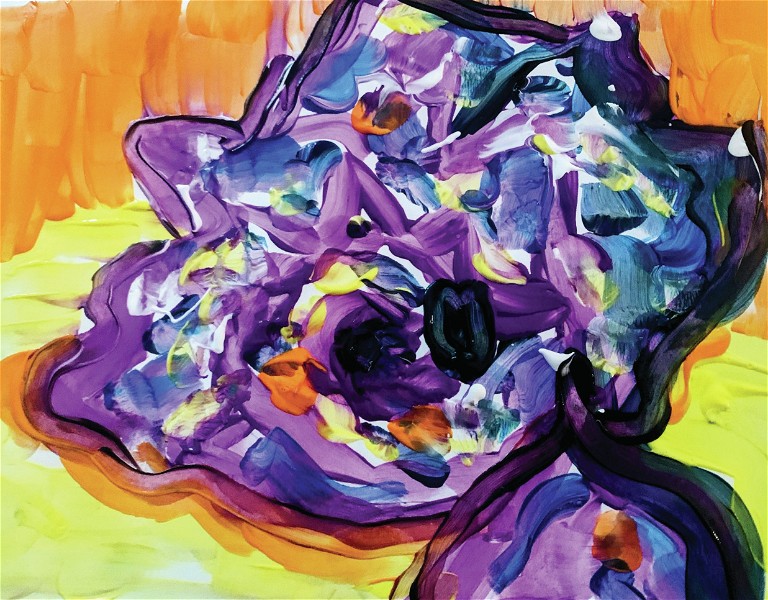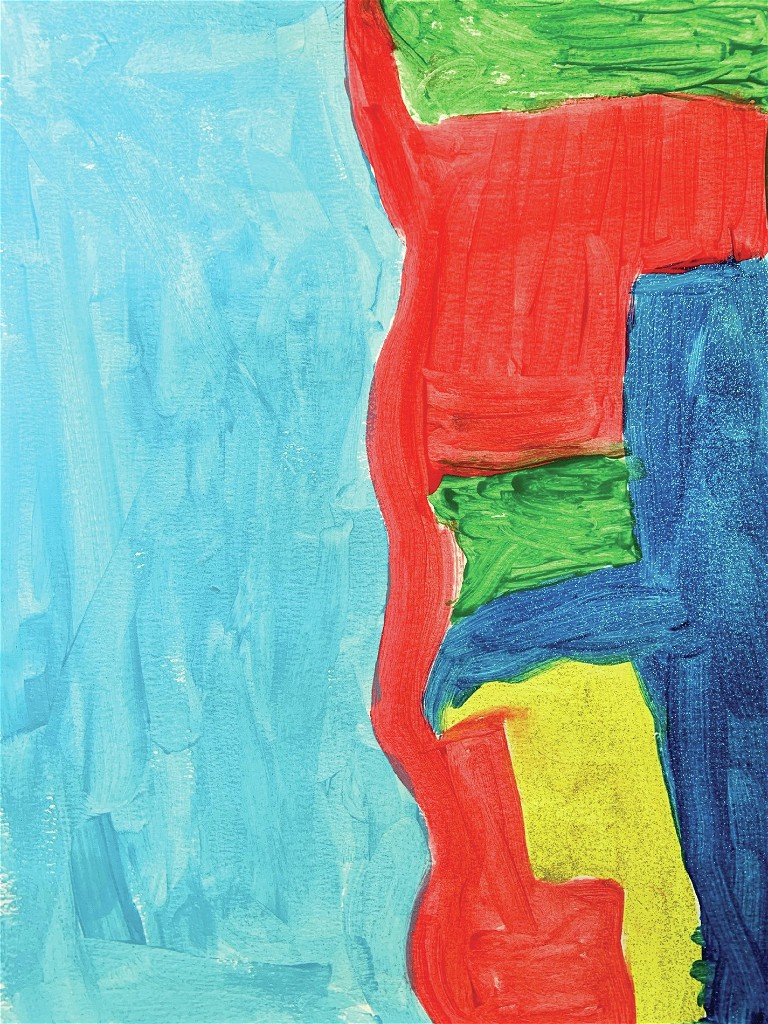EARLY CHILDHOOD

Julia L. Hovanec
After sharing the picture book I Am Peace: A Book of Mindfulness, written by Susan Verde and illustrated by Peter H. Reynolds (Abrams Books for Young Readers, 2017), I introduce students to the work of abstract artist Nadja Gabriela Plein, who creates artworks that are playful reflections and observations of her surroundings. Students then create large peaceful paintings to reflect a moment of mindfulness while carefully observing their environment. The lesson ends with students discussing their paintings and sharing how they were inspired and engaged in the artistic process.
Lesson Benefits
This lesson teaches students about mindfulness, or being in the moment. There is so much for children to navigate today, and mindfulness can help them make good choices and manage their emotions. Students will realize that everyone has moments of mindfulness in their daily lives, and being fully engaged in the present moment yields many benefits, including focus, making good choices, and self-regulation. As the book illustrates, being present helps people understand themselves better, notice and appreciate their surroundings, show empathy, and find inner peace.

Students didn't have to paint realistically to capture their observations. Abstract and playful responses were highly encouraged.
Objectives
Procedures
Ask students: “What is peace? Do you know what being mindful is? Did you know that there are mindful artists who are fully engaged and in the moment when creating their art?” Then tell them, “Today, we will listen to a peaceful story and learn about a mindful artist. After that, we’ll make large, peaceful paintings inspired by the environment.”
Sharing I Am Peace
Before sharing the book, ask students to find a comfortable position and take a deep breath. Ask them to hold up a peace sign (e.g., a premade symbol taped to a craft stick) whenever they hear the word peace throughout the story. Share the book, then guide learners in a discussion focusing on mindfulness, what they recall from the story, and how they relate to the character.
Being fully engaged in the present moment yields many benefits, including focus, making good choices, and self-regulation.
Next, introduce students to the work of artist Nadja Gabriela Plein (see Resource). Talk about her mindful artistic process, and ask students what they see and feel. Do her paintings look realistic?
Painting Peacefully and Mindfully
Before students begin to paint, bring the outdoors indoors by placing a variety of natural objects around the room such as bones, shells, leaves, and flowers. Be sure students have plenty of space to create their paintings. Urge them to take notice of their surroundings and give them time to carefully obser ve the natural objects. Play calming music and invite students to listen while observing.
Distribute large canvases, tempera paints, palettes, and brushes. Allow students time and space to mindfully create their paintings. Remind them that what they paint does not have to be realistic and, in fact, abstract and playful responses are encouraged. Assist students individually as needed. To conclude the experience, have students discuss their peaceful paintings and share how they were inspired and fully involved in the artistic process.
NATIONAL STANDARD
Creating: Conceiving and developing new artistic ideas and work.
RESOURCE
Nadja Gabriela Plein: nadjagabrielaplein.co.uk
Julia L. Hovanec is a professor of art education at Kutztown University in Pennsylvania. hovanec@kutztown.edu